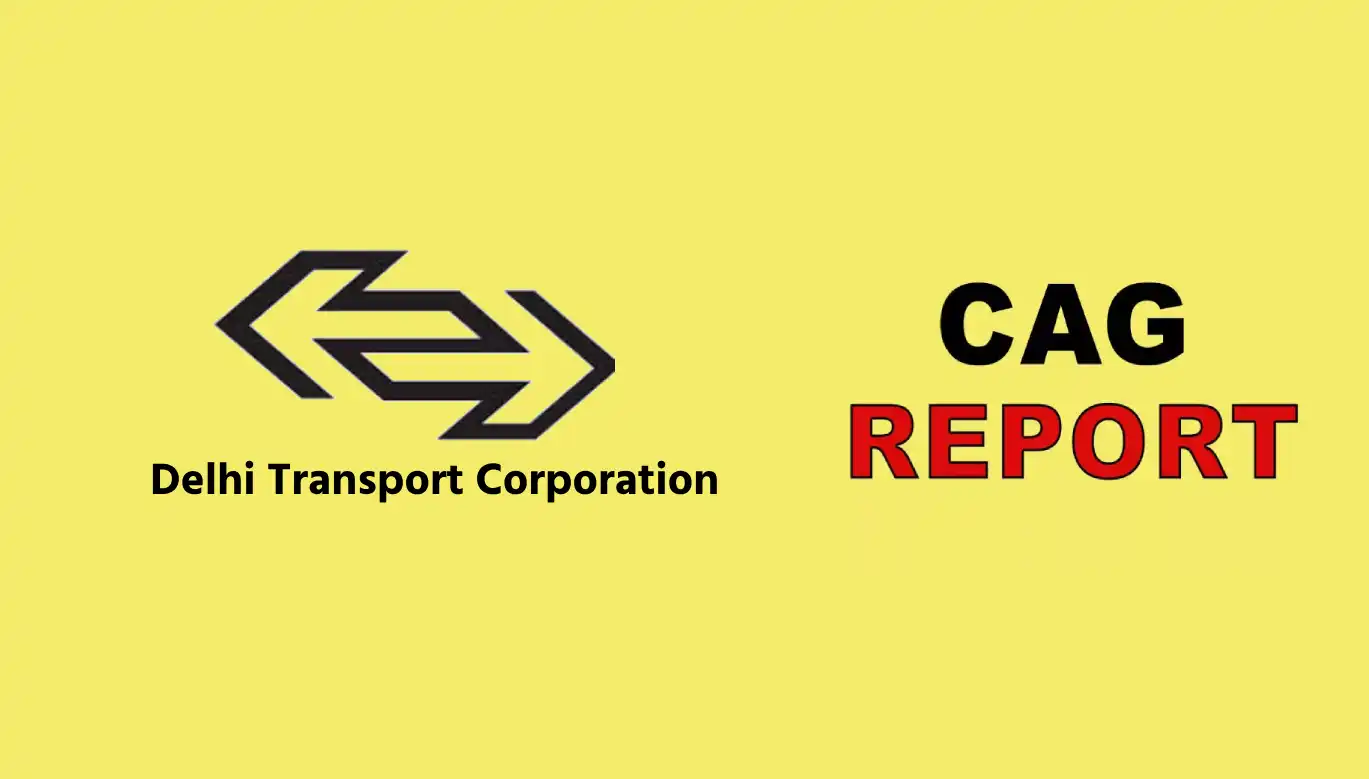The Delhi Transport Corporation (DTC), once envisioned as the backbone of the capital’s public transport system, is now teetering on the edge of financial collapse. A recent CAG report (Comptroller and Auditor General) has laid bare a staggering debt trap, with DTC’s cumulative losses ballooning from ₹25,300 crore in 2015-16 to an alarming ₹60,750 crore by 2021-22.
Table of Contents
Ageing Fleet and Frequent Breakdowns
One of the most pressing issues plaguing the Delhi Transport Corporation (DTC) is its outdated fleet. As of March 2022, the corporation operated only 3,937 buses—far below the mandated target of 5,500 set by the Delhi cabinet in 2012. Out of these, a staggering 1,770 buses were classified as overage, with Low-floor buses surpassing 12 to 10 years of service and nearing the end of their operational life.
This ageing fleet has led to frequent breakdowns, making daily commutes unreliable for passengers. The failure rate of DTC buses ranges between 2.9 and 4.5 per 10,000 kilometers—a figure significantly higher than that of state-run and private cluster buses operating under similar conditions.
Missed Fleet and Expansion Goals
Despite having ₹233 crore available for fleet expansion, DTC has consistently failed to meet its fleet expansion targets. In 2007, the Delhi High Court mandated that the corporation should operate 11,000 buses. However, in 2012, the Delhi cabinet revised this target to 5,500 buses. But by 2022 DTC procured only 300 new buses, the fleet size remained far below this revised goal.
The CAG report also highlighted the corporation’s failure to utilize ₹49 crore in central assistance under the FAME-I scheme, attributing the lapse to indecision and unclear specifications on buses. A further delay in finalizing the procurement of 300 Electric Buses under FAME-II reduced their contract period from 12 to 10 years, highlighting the inefficiencies in planning and execution.
Fare Freeze and Mounting Financial Strain
A significant factor behind DTC’s financial woes has been its inability to increase fares since 2009. Despite repeated requests, the Delhi government did not approve fare hikes, further straining the corporation’s revenue streams. The financial burden increased when the government introduced Free Bus Travel for Women, adding to the operational costs. Between 2015 and 2022, the government provided revenue grants totaling Rs 13,381 crore, but this still left a substantial funding gap of Rs 818 crore, underscoring the corporation’s unsustainable financial model.
Route Planning Woes and Operational Losses
The CAG report sharply criticized DTC’s route planning, highlighting its inefficiency and financial impact. The corporation operates on just 468 of Delhi’s total 814 bus routes— covering just 57% of the network— alarmingly, not a single bus route generated enough revenue to cover its operational costs. This inefficient route planning resulted in staggering losses of Rs 14,199 crore between 2015 and 2022, exposing the need for a complete overhaul of DTC’s route planning and operational strategies.
While the CAG report notes that private Cluster Buses, operating under the similar conditions, consistently outperform DTC across all operational metrics. It highlights the stark difference in efficiency and management between the two systems.
Failure to Modernize Ticketing and Surveillance Systems
The CAG report also highlighted DTC’s failure to modernize and inability to implement an automatic fare collection system, a project proposed 9 years ago, but remains incomplete. Additionally, the introduction of CCTV surveillance systems, intended to enhance passenger’s safety, has not been fully implemented, leaving gaps in security and operational efficiency.
Political Backlash and Growing Public Worry
The CAG findings have ignited a political firestorm in Delhi. Opposition parties have long criticized the Aam Aadmi Party (AAP), which governed until recently, for failing to deliver on its 2015 promise to expand the DTC fleet by 10,000 new buses. Now the BJP-led government, the report’s tabling is expected to fuel intense debate over accountability and the future of public transport in the capital and prepares to present it in the assembly.
Conclusion
While Delhi is now grappling with the crisis, the stakes are high with financial losses mounting and no clear roadmap in place, the future of Delhi’s public transport system remains uncertain. All these proves how mismanagement can derail even the most essential public services.
The CAG report is a clarion call to action – whether the new government can rise to this challenge remains to be seen. Unless immediate steps are taken to improve DTC’s operations, improve financial management, and adopt modern transport technologies, commuters may continue to face an unreliable and inefficient transport network.

